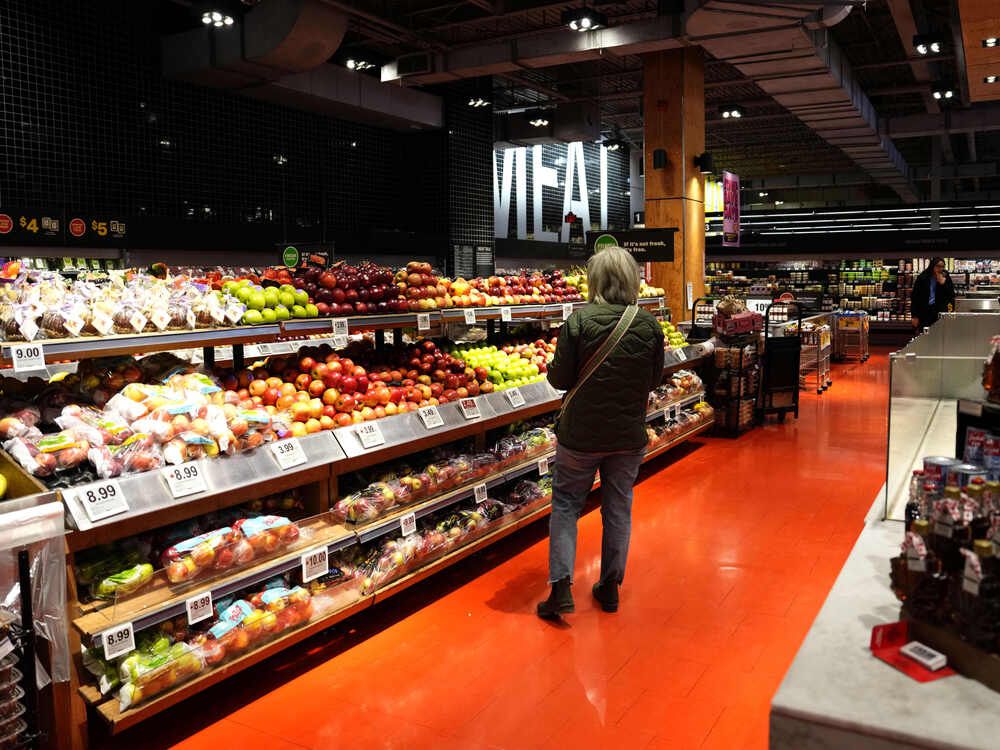
Grocery prices climbed four per cent in September compared with a year earlier, according to the latest consumer price index from Statistics Canada. The increase shows that food inflation is once again climbing after a period of slower growth. However, Canadians don’t need statistics to tell them their grocery bills have gone up. The cost of food began rising sharply during the COVID-19 pandemic and continues to take a significant bite out of household budgets. Here, the Financial Post looks at what’s driving the latest price changes at the grocery store.
Which food item saw the highest price increase?
Over the past year, coffee has seen the sharpest increases. Coffee prices were up by 28.6 per cent last month. This surge has been attributed to poor weather conditions in major distributors such as Brazil or Vietnam, as well as trade tensions, such as the tariffs imposed by U.S. President Donald Trump earlier this year.
Canadians are already feeling the effect of this increase. Most notably, Tim Hortons raised its coffee prices earlier this month, increasing prices by 1.5 per cent per cup. They cited the rising costs for imported beans and dairy products as the reason for the increase. The price hikes suggest that global supply pressures are now trickling down to everyday consumers, making the morning cup of coffee noticeably more expensive and adding further strain to household budgets already challenged by rising grocery costs nationwide.
What other foods saw significant price hikes?
Protein staples were among the biggest contributors to higher grocery bills. The price of fresh or frozen beef rose 14 per cent year-over-year, driven by extreme weather in the central plains and prairies of the U.S., resulting in smaller cow herds. The price of chicken and pork also climbed year over year by 1.5 per cent and 5.5 per cent last month, respectively, following broader trends in increasing meat prices across the country.
Seafood is another protein costing consumers more. The price of seafood overall increased by 5.5 per cent in September compared with the previous year, with the price of canned salmon rising by 8.3 per cent that same month.
Other notable price increases from last month compared with a year ago included nuts and seeds, which rose by 15.7 per cent. Trump’s 50 per cent tariff on Brazilian goods is a big contributor, as that country is one of Canada’s biggest Brazil nut, cashew, and peanut sources.
The price of dairy items such as eggs and ice cream also increased last month year over year, rising by 1.4 per cent and 1.9 per cent, respectively.
All of these increases either reflect continued global pressure on animal feed, trading tensions, or volatile climate conditions.
Which food items had the biggest monthly jumps?
While the prices of many food items experienced a steady year-over-year increase, cucumbers saw the sharpest month-over-month increase, jumping by 24.7 per cent from August. However, the price of cucumbers year-over-year only rose by 2.2 per cent.
This is likely due to seasonal fluctuations, as cucumber supply is at its peak during late summer. Cucumbers are also more sensitive to seasonal changes compared with other vegetables due to their lower tolerance for temperature extremes. The growing season for cucumbers begins to end around September, driving prices up due to lower supply.
There was also lower rainfall in certain parts of Canada in the summer of 2025, including Ontario, Quebec, and the Atlantic provinces. This caused more crop stress, resulting in increased month-by-month price increases for not only cucumbers but other fresh vegetables too. For example, lettuce had a 9.3 per cent month-by-month price increase from August to September.
Did any food items become less expensive?
Fortunately, not everything in the grocery aisle is getting pricier. The most significant price decline was for berries, as prices for these fell by 13 per cent last month compared with a year ago. This can be partially attributed to Morocco doubling blueberry exports from 2024 to 2025. It shipped 1,900 tons of blueberries to Canada, worth $19 million dollars. Canada’s 2024 berry harvest was also remarkable, reaching a 5.2% increase in total Canadian fruit production in 2024 (at about 930,982 metric tons) making it the third-highest level in a decade. A surplus in supply would contributes to a lower year-over-year inflation rate.
Edible fats and oils fell about nine per cent compared with last September, while the cost of butter and cheese dropped by 1.5 and 0.4 per cent, respectively.
Overall, the latest data highlight an increase on food prices. It shows that we have an unwelcome guest: Inflation has reserved its spot at the dinner table.
Turkey prices are way down this Thanksgiving. Is it a concern for farmers? IKEA Canada temporarily cuts food prices to help with the rising cost of living












 Bengali (Bangladesh) ·
Bengali (Bangladesh) ·  English (United States) ·
English (United States) ·